How much can you keep arsenic in the tooth: dentist's advice
Free teeth are given to a person only twice for life and to pay for the subsequent ones are not only money, but their own feelings. The fear of dentists is caused by the high soreness of all procedures with the teeth, therefore, especially when the patient has a need to stop the nerve, experts lay the arsenic in the cavity of the chewing organ.
What kind of substance?
How much you can keep arsenic in the tooth, depends on the disease, because the substance has a strong analgesic effect, completely killing the nerve. Today such a tool is considered obsolete, but popularity in dental clinics still has not lost.
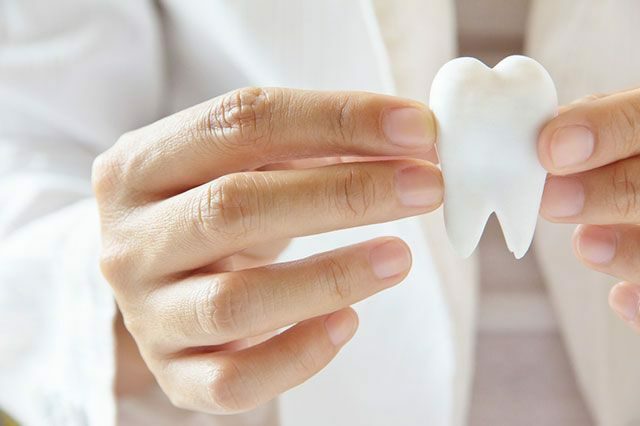
Arsenic is a very toxic and brittle non-metal. Its Latin name sounds like Arsenicum, and the domestic nickname is a tool due to its popularity in the persecution of rodents. This drug is able to completely disrupt the exchange of important trace elements in humans when the dose is exceeded. The correct amount is calculated depending on the weight and personal sensitivity to the active substance. That is why the question "How much can you keep arsenic in the tooth?"only the specialist will respond exactly. Dangerous to health doses of this drug are measured in the range of only 5-50 grams.
Need to use
How effective is the action of arsenic in the tooth? Why put and how much you can put? Use is necessary to completely poison the dental nerve endings, because they provoke strong pain symptoms in such diseases as:
- periodontitis;
- tooth decay;
- pulpitis and so on.
During an overdose of the drug or hypersensitivity to it along with the right arsenic, it can damage the bundle of vessels in the tooth or its pulp. Modern therapy uses this substance only in extreme cases, because it has a high class of toxicity. In the case of the possibility of using other anesthetics, the choice of a specialist will be directed to them.
How long should I keep arsenic in my tooth? It depends on the individual characteristics of the body, because the drug acts on the cells of the tissues in it, violating their blood supply, respiration and protein metabolism. The blockage of pain is due to the complete killing of the nerve.
Modern dentistry
Today, arsenic is not used in its pure form, but is part of various devitalizing drugs.
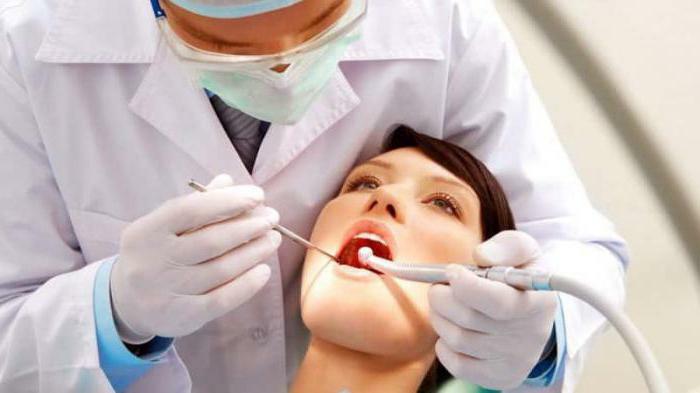
Regardless of their name, the composition is often the same:
- high-speed anesthetic;
- substance, which allows rolling paste into balls;
- antiseptic;
- is an astringent component that slows the absorption of arsenic into pulp - tannin;
- itself arsenic anhydride.
Prohibitions on the use of
How much can you keep arsenic in the tooth? The drug is applied strictly individually, in the presence of at least one of the listed conditions, it is strictly contraindicated.
The prohibitions include:
- individual intolerance of the substance and additional components;
- glaucoma;
- resorption or incomplete formation of dental roots;
- ailments of the genitourinary system;
- no possibility of cleaning channels;
- disconnection or perforation of the dental roots;
- children under the age of 1.5 years.
Ignoring these restrictions can lead to serious complications, including:
- pulp edema;
- dentin blackening;
- whole body poisoning;
- necrosis of the jaw bone;
- edema of the peri-toothed tissues.
Pregnancy and Childhood Age
As in practice this substance is not used in the treatment of oral cavity in pregnant women and toddlers, how much one can keep arsenic in the child's tooth, no one will tell. At this time, dentists use, if necessary, more loyal methods of removing nerves, less toxic and dangerous. This is due to the fact that during the arsenic laying by pregnant women the substance is able to penetrate to the fetus and adversely affect its development.
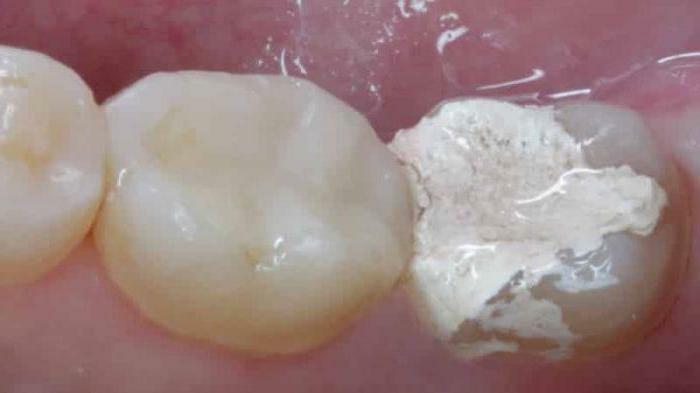
As for small children, it is very difficult to calculate the exact dose, it is likely to provoke poisoning. Also the kid can independently get out of a tooth an agent and to swallow, that is very dangerous.
In any case, after application of the drug, dentin is destroyed with time, which is unacceptable for babies whose body is just developing.
Of course, wondering how much arsenic can be kept in the tooth, it should be understood that everything depends on the characteristics of the body. The drug is pawned in adults quite often. Reason: the cheapness of the substance or if there is a negative reaction to other means of local anesthesia.
Implementation of the
procedure The entire process of killing the nerve endings always takes place in two stages. At the primary admission specialist opens the dental cavity, which requires treatment, and cleanses its internal surface. After this, an arsenic paste is poured into the cavity of the chewing organ and a temporary filling is put on top, so that the toxic substance can not penetrate the body with food.

How long it is possible to keep arsenic in the tooth, depends on the disease. The doctor appoints the next visit after a certain time period. On re-admission, the seal is opened, the drug is removed, and the tooth cavity is carefully cleaned. To determine exactly where the remedy remains, dyes are added to the paste.
Duration of exposure to
How much arsenic can be kept in the tooth of an adult patient, only the doctor will say.
The specialist takes into account not only the features of the diagnosis, but also the general condition of the patient:
- its weight;
- age;
- microflora of the whole oral cavity and so on.
In addition, an important condition for determining the duration of exposure is the method of laying the substance. How long can you keep arsenic in the tooth? Usually the drug is put on the day. When treating a multichannel tooth, this period can be doubled. Treatment of molar teeth with a strong toxic composition is about 18 hours. It is important to know that the longer the drug is in the dental cavity, the more tissues it kills, provoking new inflammations. That's why experts try to use paste with balls no bigger than a pin. Modern arsenic-based medicines contain it in minimal amounts, so they can be stored in the tooth for up to 5 days.
It is very important to remove the toxic substance in time, until it provokes poisoning of the body, periodontal inflammation and necrosis of the entire gum.
Pain after the
remedy. How many days are arsenic given for dental treatment? For each person, this question should be considered individually, but in any case, the substance should remove painful sensations almost immediately after the bookmark. Rapid anesthetic action of the pastes is provided by lidocaine, novocaine or dicaine. If, even after the visit to the dentist, the pain does not subside, and sometimes manifests itself with even greater force, then most likely the doctor put in the tooth an insufficient amount of the drug or did it on a closed pulp, which provokes severe pain and swelling.
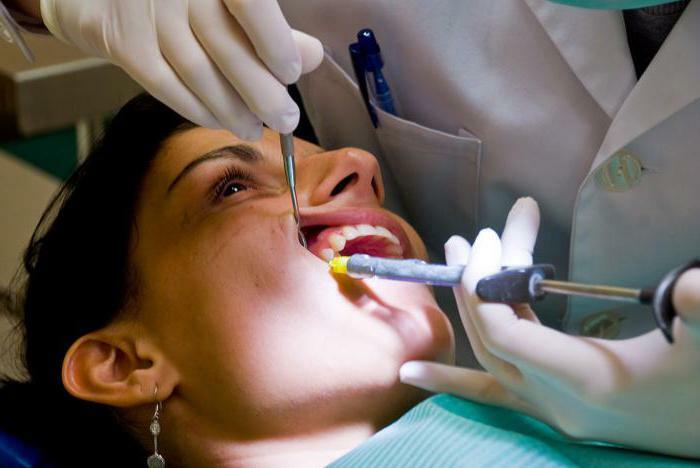
Of course, in addition to the possibility of medical errors, pain can occur for other reasons, for example:
- with an increased individual threshold of sensitivity;
- delayed effect of the drug;
- is a medicamentous inflammation;
- is an individual intolerance to any of the components of the paste.
The latter is fraught with serious consequences, so if, together with the pain begins to build up swelling, you need to urgently call an ambulance. Medication inflammation is also accompanied by swelling and an increase in body temperature. It provokes an abscess on the gum. A painful place should be immediately examined by a specialist.
Pains can occur and not immediately after the bookmark. Most often, they indicate the beginning of killing the jawbone, so the drug must be removed immediately from the cavity of the tooth. In any case, it is not worth the pain. It is better to immediately consult a specialist for help.
Self extract
If the doctor incorrectly calculated how many days you can keep arsenic in the tooth, then his negative effect on the body will start earlier than the time of repeated admission. Very often, patients do not get to attend early because of the weekend in the clinic or the specialist himself, which provokes the need to extract the paste from the tooth by himself.
To do this, first remove the seal. They are often soft and easily removed with a needle from a syringe or sewing machine. The paste itself should also be removed with a sharp tool or tweezers. It is very important at this time not to swallow it. After extraction, the oral cavity is rinsed with a soda solution with the addition of iodine or hydrogen peroxide. To neutralize the remains of arsenic will help and ordinary milk, which also needs to thoroughly rinse your mouth.
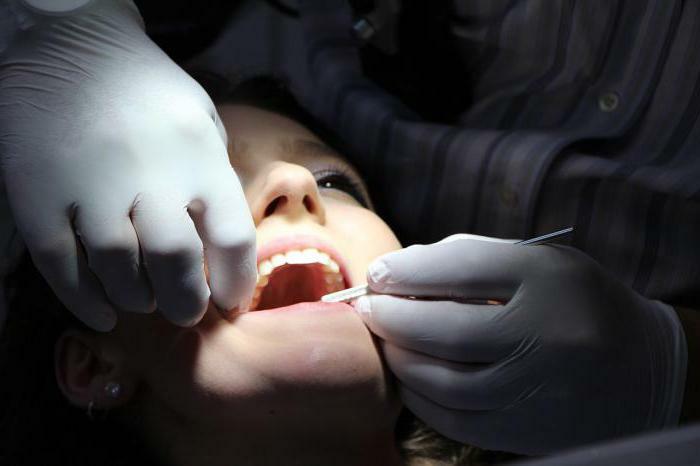
All needles or other devices for work must be disinfected, and the open dental cavity after the procedure is covered with a cotton swab. During the presence of toothpaste in the tooth is strictly prohibited from drinking alcohol, because it increases the effect of toxic substances.
Visit to the dentist should be carried out at the earliest opportunity, as with the lack of qualified care there is a risk of complications.
Why can a seal fall out?
Premature opening of the cavity of the tooth with arsenic embedded in it is most often due to the use of poor-quality materials in its manufacture. In addition, the dentist himself can break the technology: it is wrong to arrange the seal, leave a gap between the tooth and the tooth, it is difficult to clean the carious cavity and so on. Any medical violation is fraught with consequences, a seal can drop out without them. For example, if a patient has a very thin tooth enamel and lacks calcium and fluoride, or when eating hard food often. The loss of a seal can be triggered by poor quality oral care, mechanical damage and bad habits. In any case, you can not postpone your visit to the dentist.
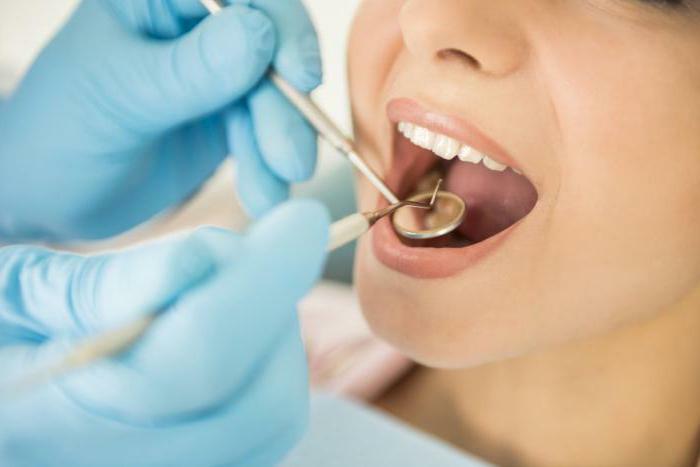 To prevent the loss of the seal, you should lower the pressure on the tooth and carefully conduct oral hygiene.
To prevent the loss of the seal, you should lower the pressure on the tooth and carefully conduct oral hygiene.
In conclusion
If you follow all the doctor's recommendations and follow the precautionary measures, then the procedure for removing the nerve with the help of arsenic will pass quickly and painlessly. For certainty, only qualified personnel with a wide list of recommendations and experience in the field of toxic substance use should be contacted for assistance.
It's no secret that enduring a toothache is very difficult. To avoid it, try to visit the dentist regularly, and then your teeth will always be in perfect order.
